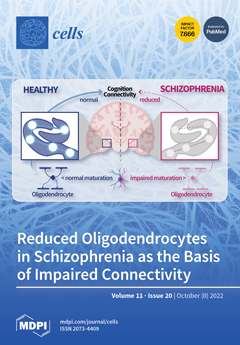The
FAM57A (family with sequence similarity 57 member A) gene is controversially discussed to possess pro- or anti-tumorigenic potential. Here, we analyze the regulation of cellular FAM57A protein levels and study the functional role of
FAM57A in HPV-positive cervical cancer cells. We find
[...] Read more.
The
FAM57A (family with sequence similarity 57 member A) gene is controversially discussed to possess pro- or anti-tumorigenic potential. Here, we analyze the regulation of cellular FAM57A protein levels and study the functional role of
FAM57A in HPV-positive cervical cancer cells. We find that FAM57A protein expression strongly depends on cell density, with FAM57A being readily detectable at low cell density, but undetectable at high cell density. This regulation occurs post-transcriptionally and is not mirrored by corresponding changes at the RNA level. We further show that FAM57A protein levels are highly increased in cervical cancer cells cultivated at hypoxia compared to normoxia and provide evidence that
FAM57A is a hypoxia-responsive gene under control of the α-subunit of the
HIF-1 (hypoxia-inducible factor-1) transcription factor. Yet, the strong relative increase of FAM57A protein levels in hypoxic cells is predominantly cell-density-dependent and occurs post-transcriptionally. Other anti-proliferative effectors besides hypoxia, such as silencing of HPV
E6/E7 oncogene expression in cervical cancer cells, also result in an increase of FAM57A levels compared to untreated cells. Functional analyses reveal that
FAM57A repression leads to pronounced anti-proliferative as well as anti-migratory effects in cervical cancer cells. Taken together, these results provide insights into the regulation of
FAM57A protein levels and reveal that they underlie a tight cell-density-dependent control. Moreover, they identify
FAM57A as a critical determinant for the phenotype of cervical cancer cells, which promotes their proliferation and migration capacities.
Full article






